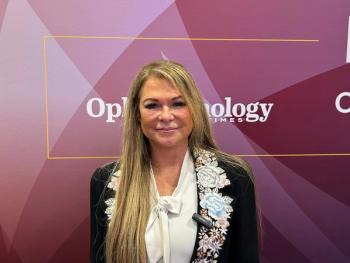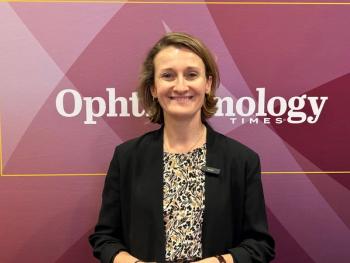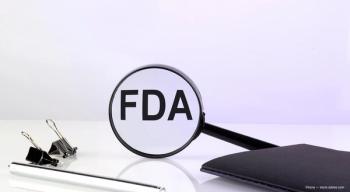
Material key to glaucoma drainage device
New Orleans—Results of a retrospective study evaluating outcomes in eyes with an Ahmed Glaucoma Valve (AGV, New World Medical) implanted indicate that the FP7 model with its silicone flexible plate affords better IOP control than the S2 model featuring a rigid polypropylene plate.
New Orleans-Results of a retrospective study evaluating outcomes in eyes with an Ahmed Glaucoma Valve (AGV, New World Medical) implanted indicate that the FP7 model with its silicone flexible plate affords better IOP control than the S2 model featuring a rigid polypropylene plate.
That difference may be due to a difference in the inflammatory reaction induced by the plate biomaterial, noted Ramesh S. Ayyala, MD, FRCS, FRCOphth. Dr. Ayyala is associate professor of ophthalmology and director, glaucoma services, Tulane University, New Orleans.
Several years ago, it was noticed that a very high proportion of patients with the S2 AGV implants exhibited a hypertensive phase (IOP >21 mm Hg in the first 6 postoperative months).
Those studies also led to the commercial introduction of the FP7 silicone AGV. Once it became available, Dr. Ayyala began using that model exclusively in his glaucoma drainage device procedures. In the present clinical study, he compared groups of patients who received the FP7 and S2 models with respect to IOP outcomes, complications, and surgical interventions. The retrospective review included 25 eyes of 22 patients with the FP7 silicone AGV implanted and 26 eyes of 22 patients that had received the S2 polypropylene AGV.
IOP data were analyzed from visits at 1 day, 1 week, and 1, 2, 3, 6, 9, and 12 months after surgery and showed mean IOP was consistently lower in the silicone FP7 group, with statistically significant differences achieved at months 9 and 12. The FP7 AGV was also associated with a significantly lower incidence of hypertensive phase (IOP >21 mm Hg) compared with the S2 group (36% versus 52%) as well as a reduced rate of bleb needling (8% versus 19%).
"There are many known and unknown factors that may influence the efficacy of a glaucoma drainage device," Dr. Ayyala said. "However, an increased inflammatory reaction is likely to contribute to the hypertensive phase and increase the risk for long-term failure due to an excessive fibrous reaction around the bleb.
"Flexible silicone is less inflammatory than rigid polypropylene, and the results of this investigation showing better IOP control with the silicone device seem to speak for themselves," Dr. Ayyala added.
The patients in the retrospective study had undergone surgery between 2002 and 2004 and were included if they had 12-month follow-up data available. Preoperatively, the two groups were similar with respect to mean age, gender, race, and BCVA. Mean IOP was 31.3 mm Hg in the S2 group and 29.6 mm Hg for the FP7 eyes and not significantly different between groups.
Patients in the polypropylene S2 AGV group were receiving a significantly higher average number of glaucoma medications compared with the silicone FP7 AGV group (3.2 versus 2.3, p = 0.04). Among the types of glaucoma in both groups, open-angle glaucoma was the most common diagnosis in the S2 group (45%) while the most common diagnosis in the FP7 group was neovascular glaucoma (50%).
Hypotensive phase IOP data showed there was an early hypotensive phase in both groups. At 1 day, mean IOP was significantly lower in the silicone FP7 AGV group compared with the polypropylene S2 AGV group (6.4 versus 10.8 mm Hg).
Newsletter
Don’t miss out—get Ophthalmology Times updates on the latest clinical advancements and expert interviews, straight to your inbox.




















































.png)


